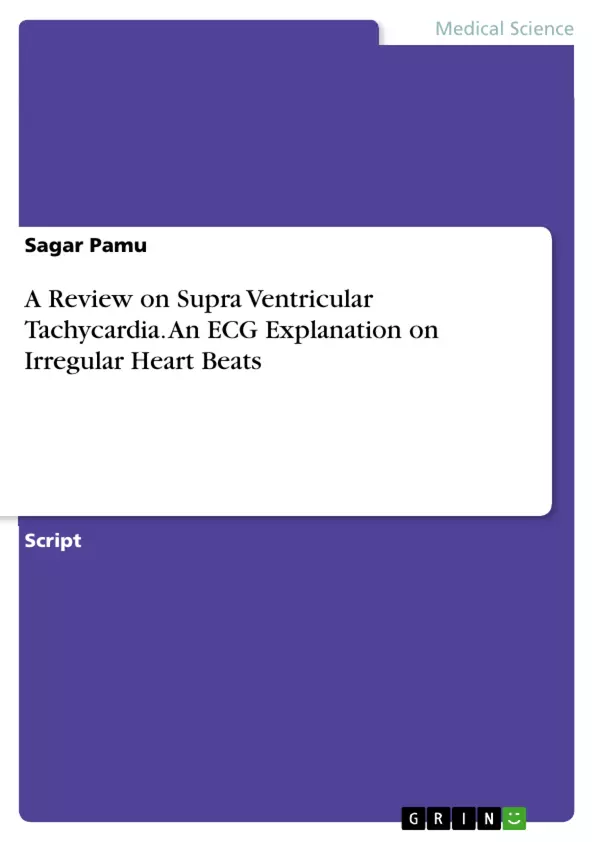Supra Ventricular Tachycardia refers to rapid rhythm of heart for a reason other than exercise, high fever and stress. This kind of faster heart beats originates and is sustained in atrial or atrioventricular nodal tissue, and then transmits improper electrical activity from the upper part of the heart through the bundle of His and cause a rapid ventricular response. They may start either from the atria and atrioventricular node.
The heart beats in a normal healthy individual will be at least a 100 beats per minute but in SVT there may be a heartbeat reaches upto 300 beats per minute. Generally, many persons with these tachyarrhythmias have structurally normal hearts [1]. SVT may start and stop quickly, and you may not have symptoms. SVT becomes very complicate when it happens often and lasts for a long time or causes its symptoms.
Table of Contents
- Introduction of SVT:
- Epidemiology:
- Causes:
- Signs and Symptoms:
- SVT Symptoms and Signs in Infants and Children:
- Diagnosis:
- TREATMENT:
- Risk Factors:
- Prevention of SVT:
- Complications:
- Life Style Modifications:
- Types of SVT's:
- Atrial Fibrillation:
- Atrial Flutter:
- Paroxysmal Supra Ventricular Tachycardia:
- Wolf Parkinson White Syndrome:
- Atrio Ventricular Re-Entrant Tachycardia:
- Epidemiology and Prevalence of SVT
- Causes and Triggers of SVT
- Clinical Presentation and Diagnosis of SVT
- Treatment Strategies for SVT
- Subtypes of SVT, including Atrial Fibrillation, Atrial Flutter, and Paroxysmal Supraventricular Tachycardia
Objectives and Key Themes
This review aims to provide a comprehensive overview of Supraventricular Tachycardia (SVT), covering its epidemiology, causes, signs, symptoms, diagnosis, treatment, and subtypes.
Chapter Summaries
The review begins by defining Supraventricular Tachycardia and outlining its prevalence in the general population. It then delves into the causes of SVT, highlighting the roles of reentry and increased automaticity. The text explores various triggers, including hyperthyroidism, stimulants, and underlying medical conditions. Signs and symptoms are discussed, with specific attention paid to the presentation of SVT in infants and children.
The review proceeds to discuss the diagnostic methods used to identify SVT, including electrocardiograms (ECGs), Holter monitoring, event monitoring, echocardiograms, and implantable loop recorders. The treatment goals and strategies for SVT are outlined, encompassing vagal maneuvers, medications, and cardioversion.
The final section delves into the various subtypes of SVT, including atrial fibrillation, atrial flutter, paroxysmal supraventricular tachycardia, Wolf Parkinson White Syndrome, and atrioventricular re-entrant tachycardia. Each subtype is discussed in terms of its characteristics, clinical manifestations, and treatment approaches.
Keywords
The main keywords and focus topics of this review include Supraventricular Tachycardia (SVT), atrial fibrillation, atrial flutter, paroxysmal supraventricular tachycardia, Wolf Parkinson White Syndrome, atrioventricular re-entrant tachycardia, epidemiology, causes, signs, symptoms, diagnosis, treatment, risk factors, prevention, complications, life style modifications, and types of SVT.
- Quote paper
- Dr. Sagar Pamu (Author), 2018, A Review on Supra Ventricular Tachycardia. An ECG Explanation on Irregular Heart Beats, Munich, GRIN Verlag, https://www.hausarbeiten.de/document/424758


